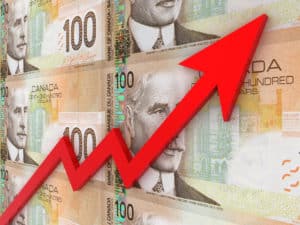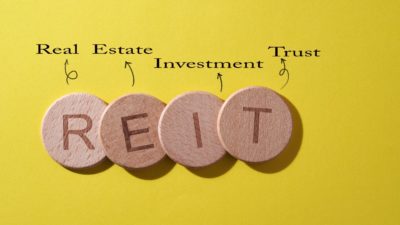According to Statistics Canada, the median income for Canadians was $32,020 in 2013. When we apply a 3% inflation rate, we arrive at a median income of $34,990 this year.
Assuming you earn a median income, if you save 10% of your income, you can save $3,499 per year (or about $292 per month). Young investors have time on their side because compounding requires time to work its magic.
Here’s how it works.
Let’s say you started a full-time job when you were 25 years old and you invested $3,499 at the start of every year, and it earned a return of 6% each year. At the end of year 17, when you’re 42, you’ll amass $104,640. And $59,483 of that was from your hard-earned dollars; $45,157 was earned from investing.
If you continue on that path for another 17 years, you’ll have $386,411 when you’re 59! Notice how the amassed amount did not merely double in that time–it shot up almost 270%! That’s the power of compounding.
Get 6% from dividends
Since dividends are typically more reliable than stock prices, it makes sense to try to get most returns from dividends and the rest from growth. Some inexpensive dividend stocks today include Bank of Nova Scotia (TSX:BNS)(NYSE:BNS), TransCanada Corporation (TSX:TRP)(NYSE:TRP), Artis Real Estate Investment Trust (TSX:AX.UN), and Brookfield Property Partners LP (TSX:BPY.UN)(NYSE:BPY).
Bank of Nova Scotia yields 4.8%, TransCanada yields 4.6%, Artis yields 8.8%, and Brookfield Property yields 4.9% based on a foreign exchange of US$1 to CAD$1.25. If you invest the same amount in each company today, you’ll start off with a yield of 5.8% and only need 0.2% price appreciation to get the 6% return.
Some investors might find it costly to invest in individual stocks if they’re only investing $292 per month. Consider instead investing in exchanged-traded funds such as VANGUARD FTSE CDN HIGH DIV YLD INDEX ETF (TSX:VDY), which yields 4.1% and allows investors to diversify right away.
At the end of January, the ETF held 91 holdings and had top 10 holdings that equated to about 65% of its net assets. The fund was weighted heavily in the financial sector (64% of assets) and had 14.6% in the oil and gas sector. Its top 10 holdings included the Big Five banks, Manulife, Sunlife, TransCanada, Potash Corp., and Thomson Reuters.
Get 6% from price appreciation
Some investors may be interested in price appreciation. Companies that have low multiples relative to their high-earnings potential, such as Concordia Healthcare Corp. (TSX:CXR)(NASDAQ:CXRX), and Linamar Corporation (TSX:LNR). Because of their low multiples and double-digit earnings-growth potential, I believe they’ll give higher price appreciation than 6% (more like an upside of 20% in the next 12-24 months, to be on the conservative side).
Conclusion
Investing for dividends is beneficial for investors because they can reinvest those dividends for more dividends. In other words, dividends received can be used to pool with savings for investments. That’s what makes inexpensive dividends stocks, such as Bank of Nova Scotia, TransCanada, Artis, and Brookfield Property, attractive.
On the other hand, cheap, high-growth companies such as Concordia and Linamar can help boost total returns in a diversified portfolio.
Compounding becomes more powerful as time goes on. Additionally, if you’re able to save and invest more as your salary grows, your amassed assets can only grow bigger! Of course, the higher the rate of return that you’re able to achieve, the bigger your amassed income becomes. However, higher returns might come with higher risk.







